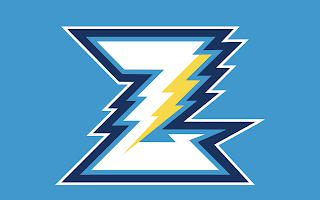Currents, Campfires & Power Chords: A Concert‑Lover’s Playbook for Oahe Zap Fans in Pierre, South Dakota

Just
after sunset on a July night at Hyde Stadium, you can see electricity ripple across the
grandstand like heat lightning when the Oahe Zap tie a game in the ninth. Yet the real spark of
central South Dakota crackles long after the last fastball thuds into a catcher’s mitt. It hums
through car radios on Highway 14, pulses beneath the red‑blinking lights of the Missouri River
Bridge, and booms from arena PA systems where superstars transform prairie silence into
surround‑sound spectacle. This guide—crafted especially for Zap devotees—maps out the
performers worth chasing and the regional venues that host them, so you can keep the
adrenaline high whether you’re cheering at Hyde or screaming at center stage.
Louisiana native Lainey Wilson rides honky‑tonk twang over swamp‑rock grooves, a blend
that earned her CMA Entertainer of the Year honors and a starring arc on Yellowstone. She
began playing opry houses at nine, funded early tours by living in a leaky camper, and now
headlines arenas with a neon‑lit water tower backdrop that nods to her tiny hometown of
Baskin. Wilson’s songwriting champions resilience—“Heart Like a Truck” likens scars to chrome
bumper dents—while “Things a Man Oughta Know” turns homespun advice into feminist
manifesto. During concerts she shreds a mustard‑yellow Telecaster, invites fans onstage for
two‑stepping tutorials, and often closes with The Band’s “The Weight,” trading verses with her
crew under a single microphone.
Kendrick Lamar’s Pulitzer‑winning narratives chronicle Compton street corners and global
conscience alike. He cut his teeth distributing mix‑tapes after school in 2003, then shattered
rap norms with good kid, m.A.A.d city and To Pimp a Butterfly. Live, Lamar performs inside a
transparent cube that alternately projects family photos, therapy notes, and breaking‑news
headlines—an immersive commentary on surveillance culture. During “Alright,” a white‑robed
gospel choir floods the stage, their harmonies swelling into protest march cadences. When he
played Sioux Falls, he referenced Sitting Bull and the 38 Lakota riders as proof that Dakota land
“knows rebellion,” drawing a standing ovation.
Colombian polymath Shakira wrote her first song at eight and landed a Sony record deal at 13;
three decades later she speaks five languages and holds more Latin Grammys than any female
artist. Her shows mash belly‑dance isolations, Catalan flamenco footwork, and aerial silk
routines. The current Las Mujeres Ya No Lloran Tour spotlights women’s soccer on massive
screens while Shakira rips through “Hips Don’t Lie” in a glittered football kit. Expect “Whenever,
Wherever” to segue into Andean pan‑flute jam sections—a nod to Great Plains flute traditions
that resonate with South Dakota’s Lakota heritage.
Abel Tesfaye’s falsetto glides atop ’80s synths and noir R&B; he began anonymously uploading
on YouTube in 2010 and now boasts the most‑streamed single in Spotify history. Dawn FM
concerts unfold like dystopian radio broadcasts—a masked DJ narrates between songs, while
dancers in bio‑hazard suits writhe beneath neon billboards flashing faux traffic alerts. Drone
fleets form constellations above open‑air stadiums; over the Oahe Reservoir’s dark sky reserve
these light clusters would gleam like extra stars.
Forged in 1981 thrash culture, Metallica toured the Midwest early, thrumming VFW halls with
Sonic Youth volume. Today their M72 No Repeat weekends rotate setlists so back‑to‑back
shows have zero overlap—fans might head‑bang to “Battery” on Friday and “One” on
Saturday. The stage is a donut, allowing James Hetfield to sprint endless laps while Kirk
Hammett’s wah‑drenched solos loop outward like ripples on Lake Oahe. When they played
Fargo, they auctioned a signed ESP guitar to support rural music programs; Pierre High’s
marching band could find itself a future beneficiary.
Post Malone moved from Dallas to LA at 18, sleeping in a friend’s closet while uploading
SoundCloud demos recorded on a $40 mic. “White Iverson” exploded, and soon his tattooed
visage beamed from Times Square. Concerts blend acoustic sing‑alongs—he strums “Stay”
with tears visible on jumbotron—with trap‑beat firestorms that unleash CO₂ cannons. Post
often tosses autographed Jordan sneakers into the pit and has been known to crash dive‑bars
afterward for ’90s country karaoke; keep an eye on Pierre’s Longbranch Saloon post‑show.
Blackpink shattered YouTube’s 24‑hour views record and became the first Asian act to
headline BST Hyde Park. Their concerts operate like four simultaneous solo showcases: Jennie
raps over industrial bass, Jisoo covers Camila Cabello, Rosé levitates on a glitter grand piano,
and Lisa lasers through dance breaks flanked by mirrors. Midwest Blinks arrive early to
rehearse fan‑chant scripts, so expect Korean syllables echoing alongside cowboy hats in line.
Irish bard Andrew Hozier‑Byrne weaves gospel choirs, Delta blues, and Yeatsian poetry into
cathedral‑sized folk rock. Unreal Unearth stages resemble craggy limestone caves, with
stalactite LEDs dripping amber light. During “Take Me to Church” he dims the arena to
near‑black, conducting audience voices like a choir director. On his last Sioux Falls visit he
covered Hank Williams’ “I’m So Lonesome I Could Cry” to honor prairie loneliness—anticipate
another region‑specific nod.
From Destiny’s Child leader to cultural institution, Beyoncé has racked up 32 Grammys, topping
every major tour gross list. Renaissance shows deliver ballroom voguing, chrome horse
animatronics, and a silver‑beaded cowboy hat that would make any South Dakota rancher
proud. She spotlights local dance troupes for “Energy”—Rapid City’s Lakota hip‑hop ensemble
appeared at her Minneapolis stop, signaling opportunities for state representation.
Akron garage duo Dan Auerbach and Patrick Carney recorded their first album in a basement
using a Salvation Army microphone; now they headline festivals with a wall of vintage amps.
Their Dropout Boogie tour features a rotating cast of blues legends—Harmonica Shah guested
in Omaha—so Pierre’s own riverboat blues scene may yield a cameo. Expect stomping
handclaps on “Gold on the Ceiling,” followed by fuzz‑bomb closer “Lonely Boy.”
California Gurl Katy Perry burst from gospel beginnings into bubblegum pop royalty, tying
Michael Jackson’s record of five No. 1 singles from one album. Her Vegas residency deployed
mushroom trampolines and 20‑foot talking toilets; the rumored stadium reboot scales those
props to Jumbotron proportions. She dedicates “Firework” to local first responders nightly—at
Des Moines she invited state troopers onstage—so Pierre firefighters may soon share the
spotlight.
Staten Island’s Wu‑Tang Clan fused kung‑fu samples with streetwise philosophy, launching
solo empires for RZA, Method Man, and more. Their live shows feel like block parties; up to
twelve MCs trade verses as Shaolin hand signs punctuate every rhyme. Anniversary sets of
Enter the Wu‑Tang (36 Chambers) spotlight deep cuts like “Tearz,” and DJ Mathematics
scratches vinyl atop a giant “W” riser. In Minneapolis they opened with a Lakota flute
sample—proof they study region‑specific sounds.
Four decades after Hysteria, Sheffield’s finest still croon stacked harmonies while Rick Allen’s
custom kit thunders one‑handed beats. The stage brandishes a diamond‑pattern catwalk that
thrusts Joe Elliott into the crowd for “Pour Some Sugar on Me.” Their catalog streams spiked
200 percent after appearing on Stranger Things, introducing them to Gen‑Z Zap fans.
Calgary dancer‑turned‑pop‑sensation Tate McRae trained under Paula Abdul at 13, placed
third on So You Think You Can Dance, and now headlines arenas with kinetic routines blending
contemporary ballet and TikTok micro‑moves. Her hit “Greedy” pairs skittering synths with
whisper‑rap verses; live, she performs it atop a cube that spins 180 degrees mid‑chorus.
McRae evangelizes mental‑health openness, pausing shows to read anonymous fan
confessions projected onstage.
New Zealand‑born Keith Urban landed his first U.S. record deal in Nashville while sleeping on
a friend’s couch. Four Grammys later, he still stages guitar shred‑offs with his backing band,
trading licks on vintage Fender Deluxes. Urban’s Speed of Now tour embeds a satellite stage
halfway up the seating bowl so upper‑deck fans witness finger‑taps up close. He famously
checks Craigslist for local sellers to snag bargain guitars in each city, gifting them to kids
onstage.
Where the Plains Meet the Power Chords
Hyde Stadium, Pierre
— Opened 1935; concert capacity ≈ 4,500 on field
Best known for hosting the Zap beneath Works Progress Administration stone walls, Hyde
converts to concert mode by rolling protective turf over the infield. Bob Seger’s 1996 gig here
introduced decibel‑monitor ordinances still enforced citywide.
Denny Sanford PREMIER Center, Sioux Falls
— Opened 2014; capacity ≈ 12,000
A two‑hour interstate cruise east delivers you to South Dakota’s largest indoor venue. Its
ETFE‑cushion roof panels mimic prairie grass swaying, and the acoustic engineers modeled
sound diffusion after wind whipping across badlands buttes.
The Monument, Rapid City
— Barnett Arena built 1977 (upgraded 2021); capacity ≈ 10,000
Set against the Black Hills, this complex debuted with Elvis Presley’s final South Dakota show.
Recent renovations added a telescoping stage that shortens load‑in times, enticing
mega‑tours otherwise deterred by mountain logistics.
Pine Ridge Wacipi Grounds, Kyle, SD
— Seasonal outdoor amphitheater; capacity ≈ 6,000
Primarily home to powwow celebrations, the grounds welcome mainstream acts respectful of
Lakota protocols. Mumford & Sons’ secret 2019 set here donated proceeds to
language‑preservation programs and proved large‑scale shows can coexist with cultural
stewardship.
Charge Up Your Ticket Cart: ZAP5
Every lightning‑quick steal home and crowd‑roaring homer fuels the Oahe Zap’s buzz. Keep
that energy flowing at your favorite concerts by entering ZAP5 at TicketSmarter checkout—good
toward any artist or venue highlighted here. Save the extra cash for bison jerky at Pierre’s
farmer’s market or a post‑show slice of Chislic at Richie Z’s.
From the crack of a bat echoing over Lake Oahe to the echo of a guitar solo ricocheting off
Missouri River bluffs, central South Dakota is tuned to amplify life’s loudest moments. Circle
these dates, gas up for wide‑open‑sky road trips, and let every chorus carry the same jolt as a
Zap walk‑off. See you under the floodlights—whether they shine from stadium poles or concert
spot rigs—as the prairie night sparks with music and memory. The body content of your post goes here. To edit this text, click on it and delete this default text and start typing your own or paste your own from a different source.
